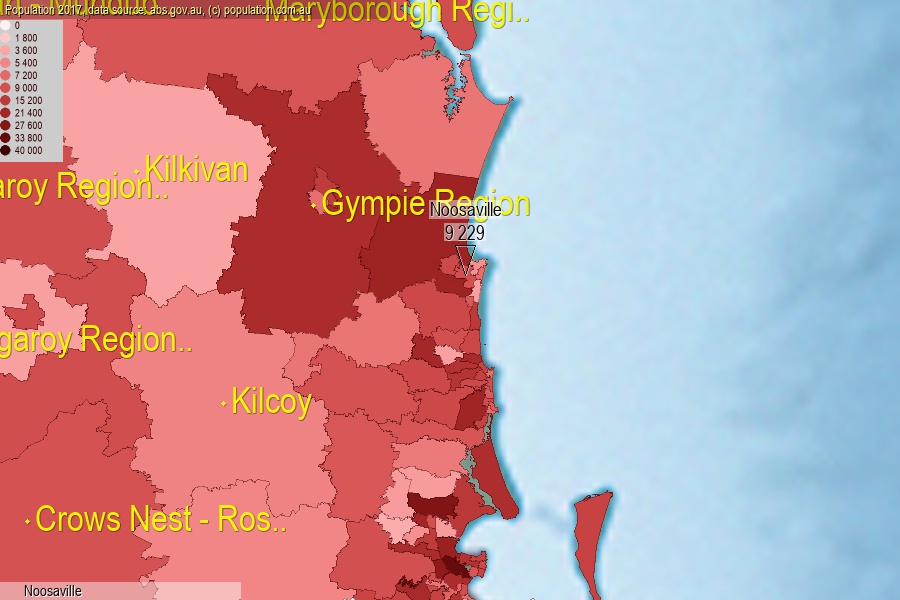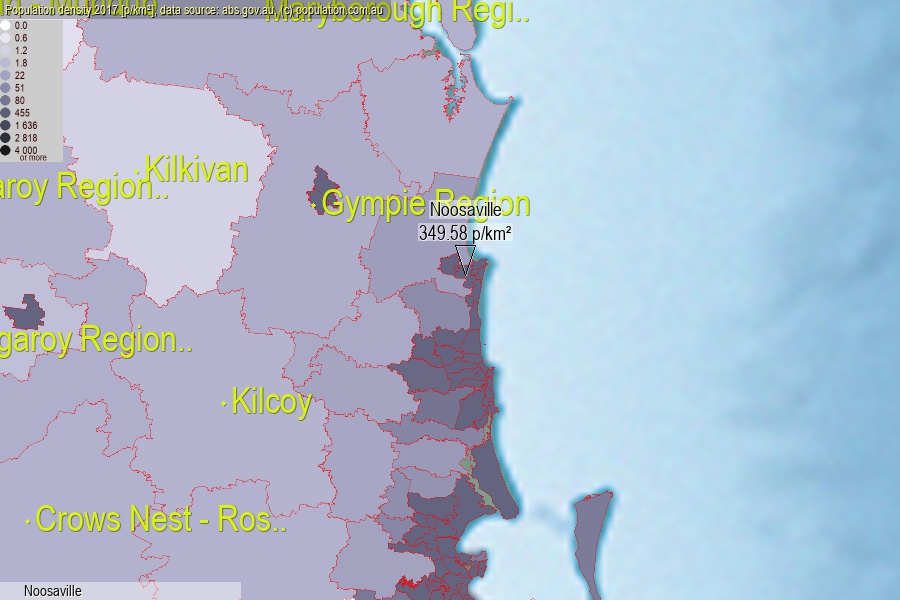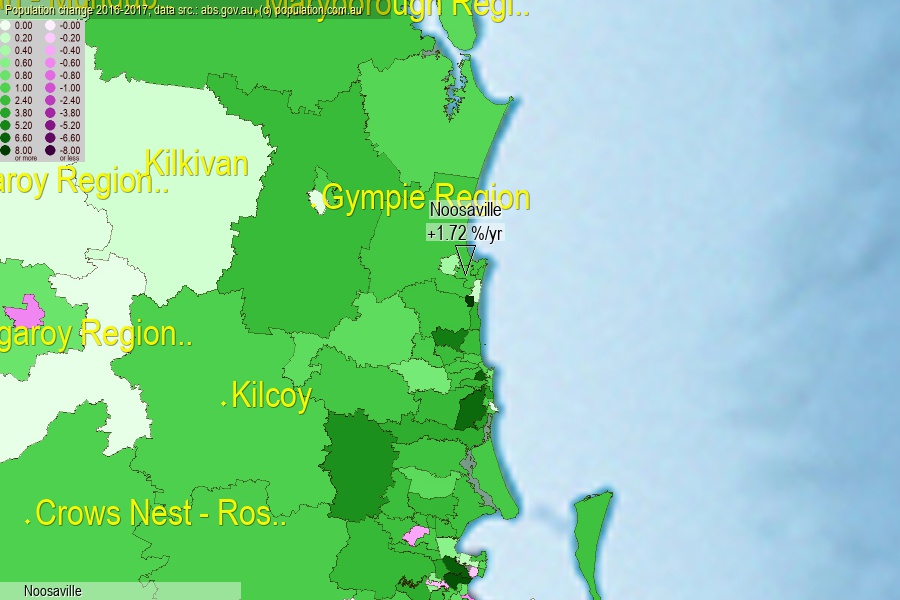 population.com.au
population.com.auLast official estimated population of Noosaville (as Statistical Area Level 2) was 9 229 people (on 2017-06-30)[2]. This was 0.04% of total Australian population and 0.185% of QLD population. Area of Noosaville is 26.40 km², in this year population density was 349.58 p/km² . If population growth rate would be same as in period 2016-2017 (+1.72%/yr), Noosaville population in 2025 would be 10 578. [0]



Click to enlarge. Noosaville is located in the center of the images.
Population [people], population density [p./km²] and population change [%/year] [2]
View borders » (new window) [4]
[1991-1992] +3.62 %/Yr.
[1992-1993] +3.84 %/Yr.
[1993-1994] +6.46 %/Yr.
[1994-1995] +10.65 %/Yr.
[1995-1996] +5.01 %/Yr.
[1996-1997] +8.13 %/Yr.
[1997-1998] +4.60 %/Yr.
[1998-1999] +8.95 %/Yr.
[1999-2000] +6.01 %/Yr.
[2000-2001] +5.67 %/Yr.
[2001-2002] +5.05 %/Yr.
[2002-2003] +2.66 %/Yr.
[2003-2004] +1.96 %/Yr.
[2004-2005] +0.83 %/Yr.
[2005-2006] -0.37 %/Yr.
[2006-2007] +1.73 %/Yr.
[2007-2008] +3.10 %/Yr.
[2008-2009] +2.09 %/Yr.
[2009-2010] +1.24 %/Yr.
[2010-2011] +1.17 %/Yr.
[2011-2012] +3.51 %/Yr.
[2012-2013] +2.40 %/Yr.
[2013-2014] +1.87 %/Yr.
[2014-2015] +2.78 %/Yr.
[2015-2016] +1.39 %/Yr.
[2016-2017] +1.72 %/Yr.
[0] Calculated with linear interpolation from officially estimated population
[1] Read more about SA2 and Australian Statistical Geography Standard (ASGS) on abs.gov.au
[2] Population data from Australian Bureau of Statistics (Population and density: 2017; change: 2016-2017)
[3] Digital Boundaries: Australian Statistical Geography Standard (ASGS) 2016.
[4] Border coordinates are simplifyed using Ramer-Douglas-Peucker algorithm.